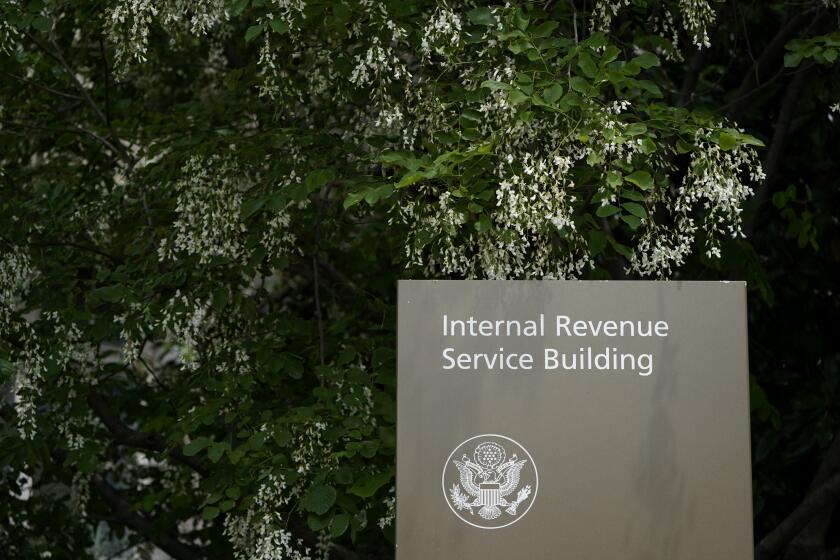California’s dismal economy needs an infrastructure boost
So how are California’s workers faring on this, the day after their Labor Day weekend?
Abysmally. God-awfully. Consider a few grim particulars:
California ranks third among the 50 states in the percentage of its workers without work. On average, the unemployed Californian is jobless for a record-high eight months, according to a new report from the California Budget Project.
Some key sectors of the California economy have all but vanished. Housing construction, the primary engine of the Southern California and the inland California economy for much of the last decade, leads the list. Between 2005 and 2009, the number of residential construction permits fell by 83%. The number of employed residential construction workers plunged from 487,000 to 77,000. And over just the last two months, the number of home sales has again declined sharply, now that federal stimulus benefits for buyers have trickled to a halt.
With thousands of homes still being foreclosed, this is an industry that won’t come back for many years.
For the 45 years after World War II, it was manufacturing that led California’s recoveries. But manufacturing no longer has enough of a presence in the state to substantially contribute to, let alone lead, a recovery. Since 1990, according to the Budget Project report, the state has lost one-third — 683,500 — of its manufacturing jobs, even though the state is home to 5.4 million more working-age adults today than it had 20 years ago.
With the long-term decline of manufacturing and the abrupt but long-lasting collapse of home-building, much of the middle of the California economy — the middle-income jobs that powered the great, half-century California postwar boom — is simply no longer there. The weak job market for middle-income Californians means that their incomes, according to the Budget Project, have declined — over the last 15 years generally and the last year in particular — while those of the poorest and wealthiest Californians have increased (quite modestly for the poorest; quite immodestly for the richest).
And with the private-sector economy that funded the state’s once world-class public sector now hemorrhaging jobs, the assault on the public sector — to drag it down to the level of the private sector — is well underway.
It’s a misnomer, however, to call all of California’s private sector “private.” Aerospace manufacturing, which anchored the Southern California economy for decades, was largely funded by the federal government, and it was the end of the Cold War that commenced the downward spiral of the state’s industrial sector. Even that part of the private sector that was genuinely private thrived in part because the state’s postwar governors — chiefly Earl Warren and Pat Brown — built the nation’s best roads, schools and universities.
In a recent article in the neoconservative City Journal, Joel Kotkin, a fellow California-ologist, notes that in the Warren-Brown days, roughly 20% of the state’s budget was devoted to infrastructure, while for the last two decades, that figure has hovered around 7%. Kotkin and I disagree on some of the causes for this decline, but we concur that the consequence — the decay of the infrastructure that helped make California the envy of the world — has been a slow-building catastrophe.
There are limits to what one state, even a state as huge as California, can do to revive manufacturing. By mandating environmental standards, for instance, it can provide, as Jerry Brown has suggested, an assured market for green technology, but the federal government needs to enact the trade, monetary and industrial policies to ensure that a greater share of the manufacture of that technology (or the manufacture of anything) takes place in the U.S.
What California can do to claim its share — a big share — of that manufacturing is to devote more resources to rebuilding its infrastructure. If Democrats want to save the state’s public sector, they need to increase the share of state spending that goes to the ports, roads, rails, broadband, schools and scholarships that will help revive the private sector. Los Angeles County’s rail and road development project, funded by a sales tax that county voters levied on themselves in 2008, can serve as one model for this kind of revival.
By so doing, the state’s leaders would create a virtuous circle. Rebuilding California’s infrastructure and expanding its manufacturing would create precisely the kind of middle-income jobs that the state’s public and private sectors once combined to create by the millions. With its economy at the lowest point since the 1930s, what California needs more than anything else are the public investments that would restore its middle class.
Harold Meyerson is editor at large of the American Prospect and a columnist for the Washington Post. He is doing a guest columnist stint on our Tuesday Op-Ed page.
More to Read
Inside the business of entertainment
The Wide Shot brings you news, analysis and insights on everything from streaming wars to production — and what it all means for the future.
You may occasionally receive promotional content from the Los Angeles Times.







